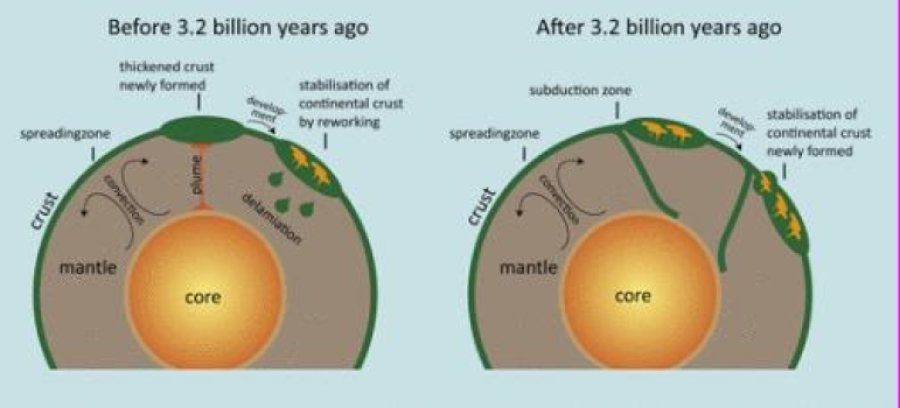The current theory of continental drift provides a good model for understanding terrestrial processes through history. However, while plate tectonics is able to successfully shed light on processes up to 3 billion years ago, the theory isn’t sufficient in explaining the dynamics of Earth and crust formation before that point and through to the earliest formation of planet, some 4.6 billion years ago. This is the conclusion of Tomas Naæraa of the Nordic Center for Earth Evolution at the Natural History Museum of Denmark, a part of the University of Copenhagen. His new doctoral dissertation has just been published by the journal Nature.
“Using radiometric dating, one can observe that Earth’s oldest continents were created in geodynamic environments which were markedly different than current environments characterised by plate tectonics. Therefore, plate tectonics as we know it today is not a good model for understanding the processes at play during the earliest episodes of Earths’s history, those beyond 3 billion years ago. There was another crust dynamic and crust formation that occurred under other processes,” explains Tomas Næraa, who has been a PhD student at the Natural History Museum of Denmark and the Geological Survey of Denmark and Greenland — GEUS.

“Plate tectonics theory can be applied to about 3 billion years of the Earth’s history. However, the Earth is older, up to 4.567 billion years old. We can now demonstrate that there has been a significant shift in the Earth’s dynamics. Thus, the Earth, under the first third of its history, developed under conditions other than what can be explained using the plate tectonics model,” explains Tomas Næraa.
Credit: Image courtesy of University of Copenhagen
Plate tectonics is a theory of continental drift and sea floor spreading. A wide range of phenomena from volcanism, earthquakes and undersea earthquakes (and pursuant tsunamis) to variations in climate and species development on Earth can be explained by the plate tectonics model, globally recognized during the 1960’s. Tomas Næraa can now demonstrate that the half-century old model no longer suffices.
“Plate tectonics theory can be applied to about 3 billion years of the Earth’s history. However, the Earth is older, up to 4.567 billion years old. We can now demonstrate that there has been a significant shift in the Earth’s dynamics. Thus, the Earth, under the first third of its history, developed under conditions other than what can be explained using the plate tectonics model,” explains Tomas Næraa. Tomas is currently employed as a project researcher at GEUS.
Central research topic for 30 years
Since 2006, the 40-year-old Tomas Næraa has conducted studies of rocks sourced in the 3.85 billion year-old bedrock of the Nuuk region in West Greenland. Using isotopes of the element hafnium (Hf), he has managed to shed light upon a research topic that has puzzled geologists around the world for 30 years. Næraa’s instructor, Professor Minik Rosing of the Natural History Museum of Denmark considers Næraa’s dissertation a seminal work:
“We have come to understand the context of the Earth’s and continent’s origins in an entirely new way. Climate and nutrient cycles which nourish all terrestrial organisms are driven by plate tectonics. So, if the Earth’s crust formation was controlled and initiated by other factors, we need to find out what controlled climate and the environments in which life began and evolved 4 billion years ago. This fundamental understanding can be of great significance for the understanding of future climate change,” says Minik Rosing, who adds that: “An enormous job waits ahead, and Næraas’ dissertation is an epochal step.”
Journal Reference:
- T. Næraa, A. Scherstén, M. T. Rosing, A. I. S. Kemp, J. E. Hoffmann, T. F. Kokfelt, M. J. Whitehouse. Hafnium isotope evidence for a transition in the dynamics of continental growth 3.2 Gyr ago. Nature, 2012; 485 (7400): 627 DOI: 10.1038/nature11140



 November 10th, 2016
November 10th, 2016  Riffin
Riffin  Posted in
Posted in  Tags:
Tags: 